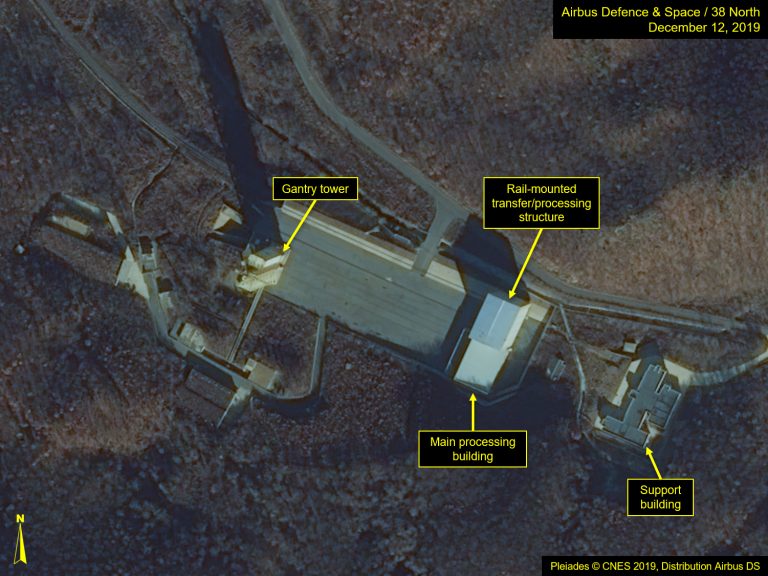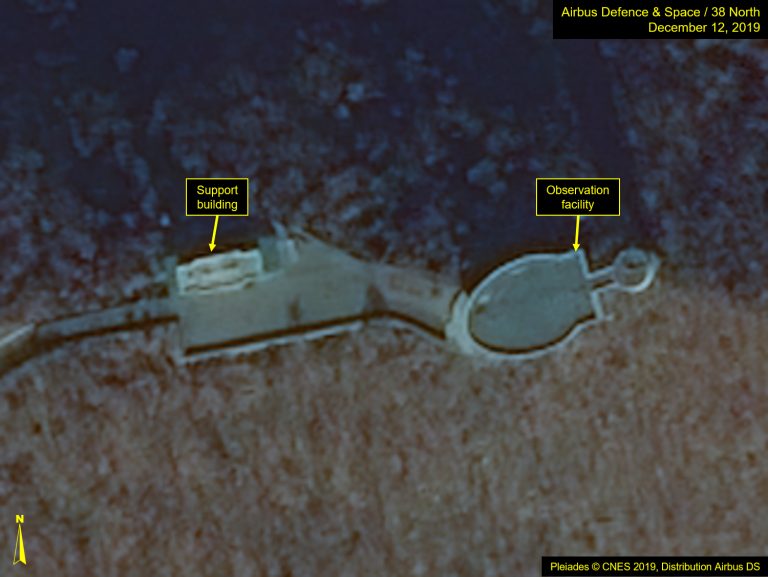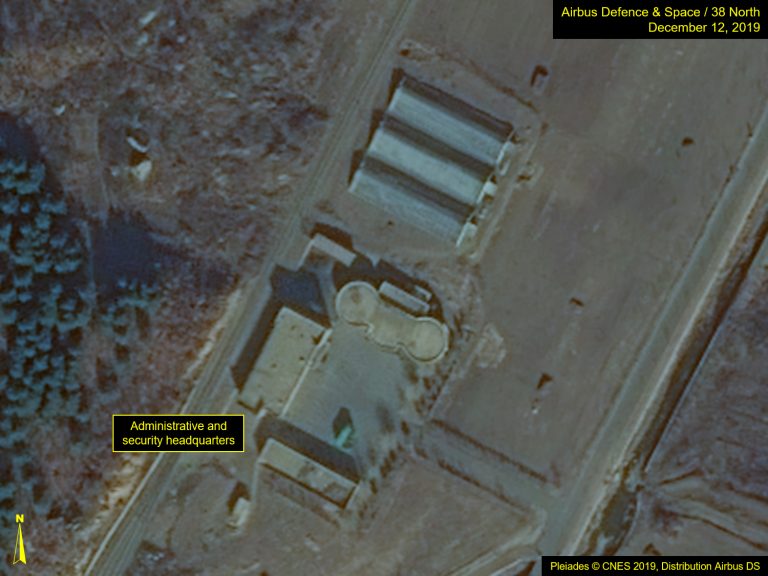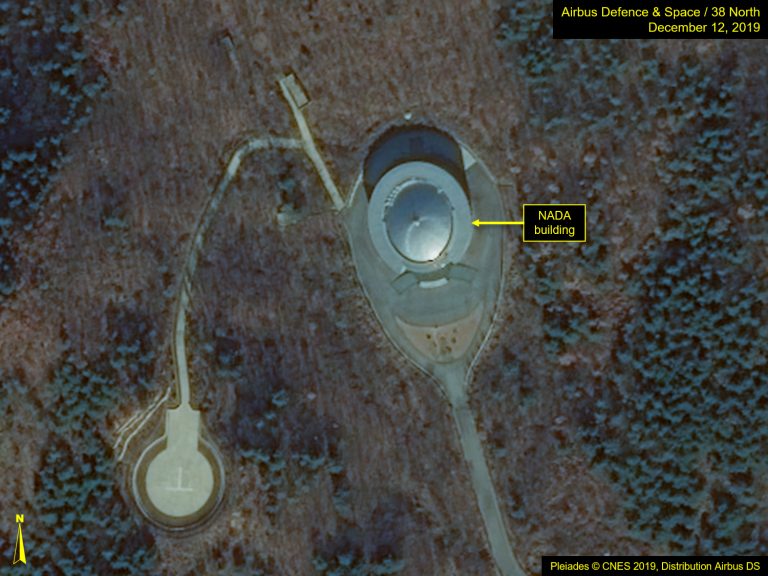No Indications of Satellite Launch Preparations at the Sohae Satellite Launch Facility
There has been recent speculation that North Korea’s threatened “Christmas gift” might be a satellite launch from the Sohae Satellite Launching Station. Our review of commercial satellite imagery taken over the past two months show no indications of such preparations.
Figure 1. No observable activity at launch-related facilities at the Sohae Satellite Launching Station.
Monitoring satellite launches at Sohae with commercial imagery has become more challenging since 2012 when the North Koreans attempted to fire two rockets into space. The signatures for pre-launch activity at the time were well documented. But a series of improvements to the site since then has increased the North’s concealment capabilities, making both monitoring and prediction more challenging. These include:
- Covering the railway station to hide launch vehicle components when they arrive at the facility;
- Extending the rail line to tunnel under the launch pad, enabling the train to carry the stages all the way to the launch pad;
- Constructing a rail-mounted transfer structure on the launchpad to lift launch vehicle components from railcars in the tunnel, to be checked out and transported to the gantry tower to be stacked;
- Building a launch processing building on the pad for final preparation and testing;
- Installing service platforms on covered arms that fold around the gantry tower, both concealing and protecting the launch vehicle inside; and
- Constructing fuel/oxidizer bunkers to directly fuel the launch vehicle on the pad without having telltale fuel/oxidizer trucks in the area.
And while not a new practice, the North Koreans can also conduct some of these launch preparations at night to minimize detection from certain commercial satellites.
Despite all these concealment measures, there were still some indicators observed in the weeks leading up to the February 7, 2016, satellite launch, such as vehicles present on the launch pad and around the VIP housing area and the launch control building. Additionally, tanker trucks were observed at the fuel/oxidizer bunkers a few days before the launch. Although the environmental cover over the gantry tower precluded the ability to observe when the rocket was assembled and ready to launch, the heightened activity around the key areas signaled that preparations were underway.
Going forward, while there may not be any obvious signs of satellite launch preparations until just days before it takes place, there are certain activities that would be cause for concern.
First, vehicle activity at various locations around the complex would be observed as they prepare for the launch and for VIP observers. This could include security facilities, the VIP observation and tracking facilities and other support facilities, however, it might not be observable until just prior to an event.
Second, the North Koreans would likely clear vegetation from the area below the launch pad’s flame bucket to avoid ignition of fires. While there are two fire-break trenches located in the area below the flame bucket, there are several support buildings nearby that would be susceptible to fire, even if they are designed to minimize fire damage. The removal of vegetation in the days before the test is consistent with what we’ve seen in the past at the launch pad and, most recently, at the engine test stand.
A third and most reliable indicator would be the movement of the transfer structure to the launch tower, something which is not likely to be observed until a day or so before a launch.
A fourth indicator that would be relevant during the winter months would be targeted snow removal. Although there currently is no snow at the Sohae facility, if there were snowfall prior to a satellite launch, we would expect to see snow removal operations at key locations throughout the complex to include main roadways, the launch site, the VIP observation facilities, and the helipad near the National Aerospace Development Administration (NADA) buildings.
To date, except for activity directly associated with recent engine tests, none of these activities have been observed at the Sohae facility. Should the DPRK be planning a satellite launch, then the aforementioned indicators should begin to appear in the next few days.




